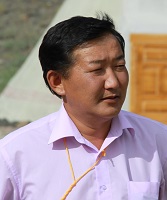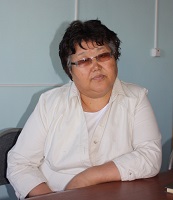Mongolisms in Tuvan Toponyms: A Comparative Analysis of Placenames in Tsengel sum of Bayan-Olgii Aimag, Mongolia with those of Tuva
DOI:
https://doi.org/10.25178/nit.2018.3.14Keywords:
toponymy; Tuvan language; toponym; Tuva; Mongolia; Tsengel; Mongolian language; mongolism; linguistic processesAbstract
Mongolisms occupy a major place in the toponymy of Tuva – a group of toponyms which deserves urgent attention of scholars. A study of them should include a comparative analysis of Tuvan toponyms with place names in Mongolia populated by Tuvans. This article analyses Mongolian influence on the toponymy of Tuva and Mongolia. It is based both on existing publications on toponymy of Tuva and on the field data collected by the authors in Tsengel sum of Bayan-Olgii aimag of Mongolia, an area of compact settlement of Tuvans, in 2010-2011.
At the moment, Tuvan toponyms in Mongolia are vanishing. Mongolian Tuvans use their native language only with their family members. Local placenames, previously used in Tuvan, were translated into Mongolian by Soviet specialists at the request of Mongolian authorities in 1930s-40s, and this now appear in the Mongolian language on the maps.
An analysis of Tuvan and Mongolian toponyms of Mongolian origin (Amdaigyn-Kho, Chyrgalady, Saigyn, Bayan-Churek, Bayan-Tala, Khaiyrakan in Tuva and Noyan-Dag, Tsengel-Khairkhan, Bumbalyg-Khairkhan, Khaan-Dag, Bayan-Churek in Mongolia) shows that they have undergone a phonetic adaptation to the Tuvan language. They accepted its rules, so the Tuvan language treated them like its own material, forming place names in accordance with its own norms. At the same time, the adaptation of Tuvan and Mongolian toponyms by the Mongolian language has its own distinctive features.
This lexical layer of the Tuvan language is of great interest for academic study. However, it is equally important to preserve Tuvan linguistic heritage, especially under the conditions of linguistic assimilation of Tuvans in Mongolia.
References
Bavuu-Syuryun, M. V. (2011) O problemah prepodavaniya rodnogo (tuvinskogo) yazyka v usloviyah zarubezhnogo dialekta [On the problems of teaching the native (Tuvan) language under conditions of a foreign dialect]. In: Aktual'nye problemy dialektologii yazykov narodov Rossii [Urgent issues of dialectology of languages of the peoples of Russia] : Proceedings of the 11th inter-Regional conference / comp. by R. N. Karimova. Ufa, IIYAL UNC RAN. 213 p. Pp. 33–36. (In Russ.)
Bayarsaikhan, B. (2000) Toponimy na territorii sumona Tsengel v Mongolii (na tuvinskom yazyke) [Toponyms on the territory of Cengel sumona of Mongolia (in the Tuvan language)]. In: Stanovlenie i razvitie nauki v Tuve. [Rise and development of research in Tuva]. Proceedings of the International conference devoted to the 70th anniversary of Tuvan writing, September 12-14, 2000. Kyzyl, RIO TuvGU. Part I. 140 p. Pp. 23–25. (In Russ.)
Grumm-Grzhimajlo, G. E. (1914) Zapadnaya Mongoliya i Uryanhajskij kraj [Western Mongolia and Uryankhai krai]: in 4 vols. St. Petersburg, Nevskaya tipografiya. Vol. IV. 584 p. (In Russ.)
Kenin-Lopsan, M. B. (1993) Magiya tuvinskih shamanov [The Magic of Tuvan shamans]. Kyzyl, MP «Novosti Tuvy» Publ. 158 p. (In Russ.)
Ondar, B. K. (2007) Toponimicheskij slovar' Tuvy [A Toponymical dictionary of Tuva]. Kyzyl, Tuv. kn. izd-vo. 552 p. (In Russ.)
Ondar, B. K. (2008) Tuvinskaya toponimiya. Sopostavitel'nyi analiz toponimov Tuvy s toponimiei Yuzhnoi Sibiri i drugikh tyurkoyazychnyh territorii. [The toponymy of Tuva: A Comparative Analysis of Tuvan toponymy in comparison with that of South Siberia and other Turkic-speaking areas] Kyzyl, Tuvinskoe knizhnoe izdatel'stvo. 304 p. (In Russ.)
Radlov, V. V. (1899) Opyt slovarya tyurkskih narechii [An attempt at a Dictionary of Turkic dialects]. St. Petersburg, Tipografiya Imperatorskoj akademii nauk nazvanie izdatel'stva. Vol. II. Part 1. 530 p. Pp. 22. (In Russ.)
Published
How to Cite
Issue
Section

Author(s) license holder(s) grant rights for their work to the journal (grantee of a license) under the simple non-exclusive open license in accordance with Art. 1286.1 «Open license for a research work, work of literature or fine arts», Civil Code of the Russian Federation.
New Research of Tuva publishes articles under the Creative Commons Attribution-NonCommercial license (CC BY-NC).
Since it is an open license, author(s) reserve the right to upload the article to their institutional repository, submit it to another journal (if it allows republications), or republish it on their own website (in full, or in part).
However, several conditions apply here:
a) The republished version must always contain the name(s) and affiliation(s) of the author(s), the original title and the hyperlink to the original version on the New Research of Tuva website;
b) It must be in open access, free of charge, and no category of readers must be in any way whatsoever advantaged over general readership.
c) should the contribution be submitted elsewhere by its author(s) without substantial modification (30% or more of original text unchanged), the body of the article should contain a disclaimer that the original version was published in New Research of Tuva (with a link to the respective page)
The CC-BY-NC is a non-revocable license which applies worldwide and lasts for the duration of the work’s copyright.










